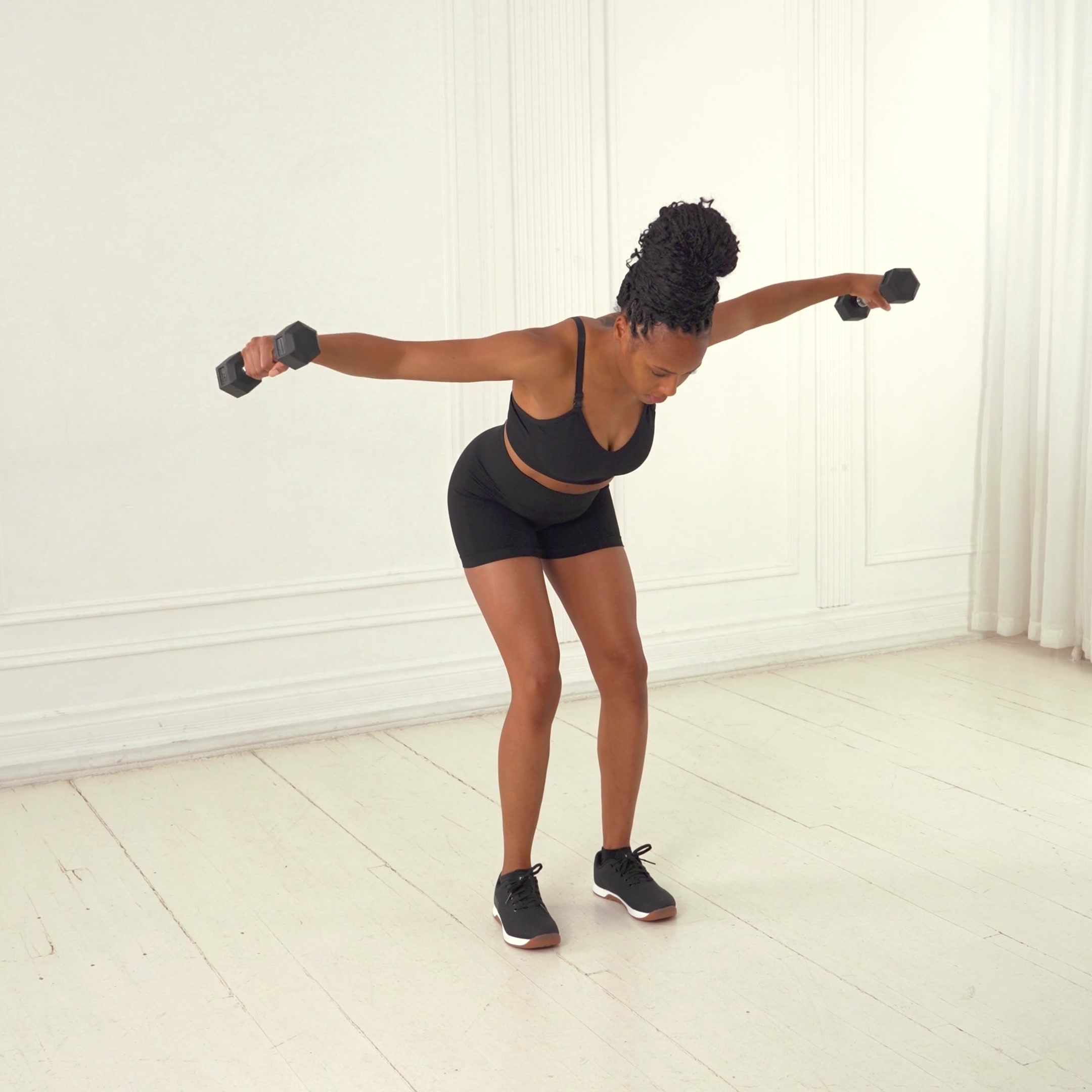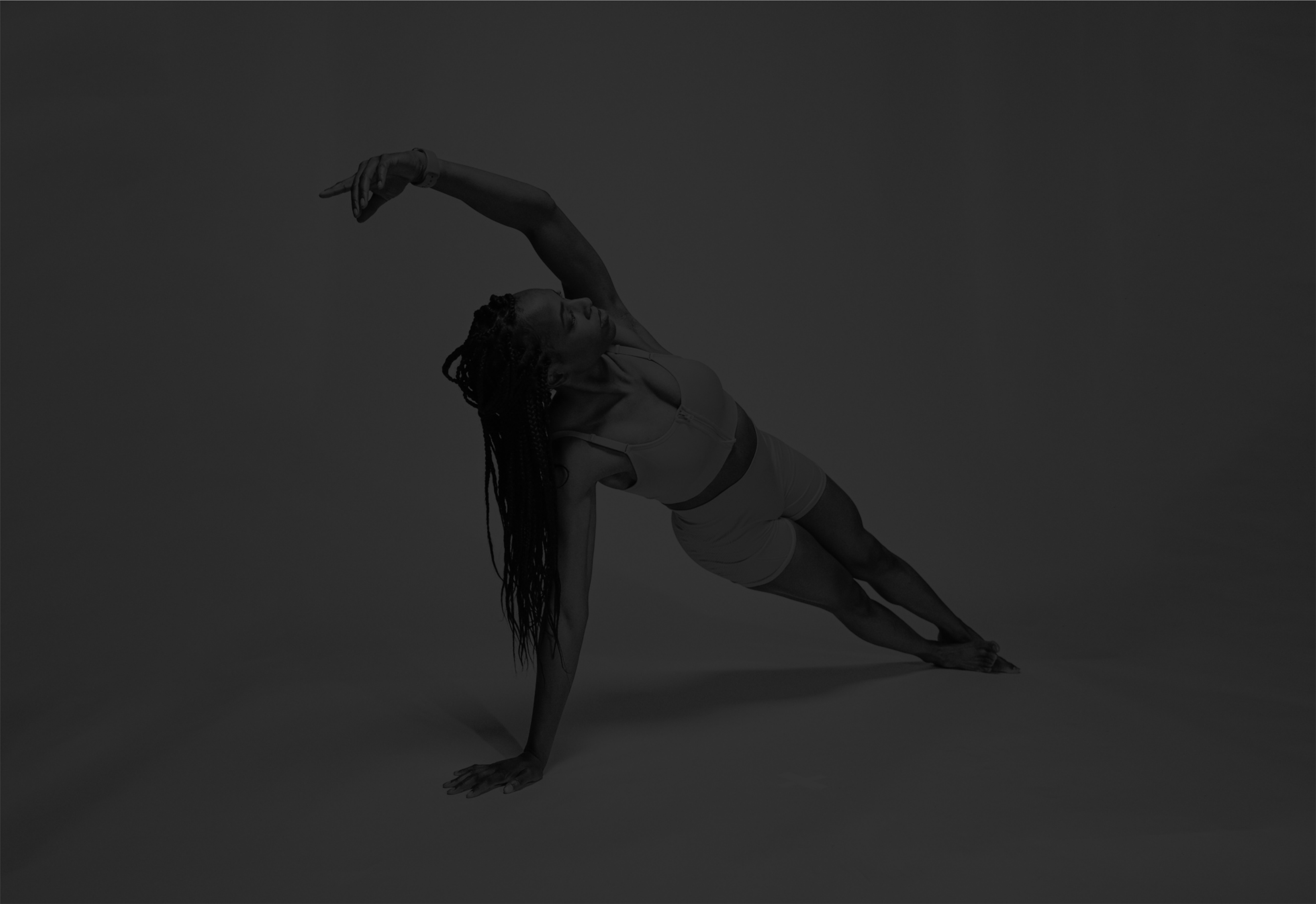Dumbbell Rear Delt (Reverse) Fly
 Auto Detected
Auto DetectedDumbbell reverse fly is an isolation exercise targeting rear deltoids and upper back to build shoulder stability and improve posture, performed bent over with arms raised out to sides.
About Exercise
Equipment
Dumbbells
Difficulty
2/5 • Intermediate
Primary Muscle Groups
Shoulders, Traps
Secondary Muscles
Lower Back
Popularity Score
8
Goals
Training Style
Setup Requirements
Requires Rack
No
Requires Bench
No
Requires Spotter
No
Space Needed
Small
Noise Level
Low
Muscle Breakdown
View Muscle MapShoulders
10/10Rear Delts
Traps
8/10Mid Traps, Lower Traps
Lats
6/10Teres Major
Lower Back
4/10Erector Spinae
Programming
Typical Rep Range
10-15 reps
Rest Between Sets
60-90 seconds
How to Perform
Stand with feet shoulder-width apart, holding dumbbells with neutral grip. Hinge at hips until torso is nearly parallel to floor, knees slightly bent, arms hanging down with slight elbow bend, core engaged.
- Exhale and raise arms out to sides, squeezing shoulder blades together.
- Lift until arms are level with shoulders, forming a T shape.
- Inhale and lower dumbbells slowly back to start.
- Maintain neutral spine and slight elbow bend throughout.
- Repeat for prescribed reps, controlling the motion.
Coaching Tips
Form Cues
- Squeeze shoulder blades
- Keep elbows soft
- Neutral spine always
- Lead with elbows
- Core tight
- No shrugging
Breathing
Exhale as you raise the dumbbells, inhale as you lower them. Brace core to stabilize spine.
Tempo
3-1-2
Range of Motion
Lower arms to hang straight down from shoulders; raise to parallel with torso, elbows slightly bent. Avoid going above shoulder height.
Safety
Safety Notes
- Avoid if acute shoulder impingement or low back pain
- Start light to master form
- Stop if pain in shoulders or back
- Keep chin tucked
- Use mirror for form check
Spotting
Not typically needed; use lighter weights or supported variation for safety if balance is an issue.
Common Mistakes
- Rounding back
- Swinging weights
- Locking elbows
- Shrugging shoulders
- Excessive arching
- Using momentum
When to Avoid
- Shoulder impingement
- Lower back injury
- Rotator cuff issues
Flexibility Needed
- Adequate hip hinge mobility
- Shoulder external rotation range
Build Up First
- Master basic standing hip hinge
- Understand scapular retraction
Also known as
Bent-Over Reverse Fly, Rear Delt Fly
Found this helpful?
Share your thoughts or help us improve this guide.
Similar Exercises

Dumbbell Standing Rear Delt Fly
Dumbbells
Shoulders

Dumbbell Rear Delt Row
Dumbbells
Shoulders

Dumbbell Seated Rear-Delt Row
Dumbbells, Flat Bench
Shoulders

Dumbbell Incline Bench Reverse Fly

Dumbbells, Incline Bench
Shoulders

Machine Rear Delt (Reverse) Fly

Rear Delt Fly Machine
Shoulders

Dumbbell Reverse Fly on Stability Ball
Dumbbells, Stability Ball
Shoulders

TRX Rear Delt Row
TRX
Shoulders

Cable Upright Rear Delt Fly

Crossover Cable Machine
Shoulders

Cable Single-Arm Bent Over Rear Delt Fly
Single Cable Machine
Shoulders

TRX T-Deltoid Fly
Others
Shoulders


subscribe to our newsletter
Contact Us
hello@trainfitness.aiFind Us
130 Spadina Avenue, Toronto,
Ontario, M5V 0H4, Canada
©2025 All Rights Reserved
